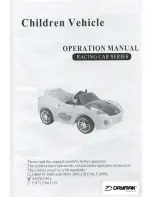
.
KING KOBRA RC54 COVERING AND FINISHING
The manufacturer's directions for applying iron-on coverings are packed with the
material. Follow these closely, for different types of covering have different iron
temperatures and techniques of application. Whatever kind of covering you
desire to use, it will not conceal a rough framework. Sand carefully with fine
sandpaper before beginning to cover.
IMPORTANT! Don't skip covering the
fuselage and tail just because they
are solid wood. They will be much
more resistant to splitting and
breaking on hard impacts if they are
covered with something - Sig Silk,
Silkspan, Sig Silray, Sig Koverall or
plastic iron-on covering material.
About the only recommended
alternative to covering is to first fill
the wood with Sig Finishing Resin
and then paint the resin. (Fiberglass
cloth is too heavy for a entire model.)
Our prototypes were covered with Sig Koverall and it's so strong and easy to use
that we recommend it. Koverall is slightly heavier than silk, but not much. We
covered one of our small Kobra (.19 - .35) prototypes with Koverall as an
experiment and it was not noticeably different in finished weight from another that
was covered with silk. On a foam wing model, the fact that Koverall is applied dry
is a particular advantage. The wetting necessary for the application of silk
sometimes raises the grain of the wood or a seam in the wing skins. It is more
economical than silk.
Brush a coat of clear dope (Sig Supercoat, Sig Lite Coat or Sig Nitrate, depending on the final finish to be applied) on all
parts of the structure that will touch the covering. When the dope is dry, sand lightly to remove any raised fuzz or grain.
The bottom of the wing is a good place to start covering. Cut a piece of material about 1/2" larger all around than half of
the wing, with the grain running lengthwise. (The grain of woven materials runs parallel to the finished bias edge.)
Pin the Koverall in place, pulling out all of the large wrinkles. (Koverall shrinks up
considerably under heat. Don't worry about such things as the packaging fold
wrinkles - they will come out with the iron.)
Brush around the outside edge of the stretched Koverall with clear dope. The
dope will soak through the material and adhere to the dope already dried into the
framework. Glue only the outside edges down. Leave the rest of the material
unattached to be heat-shrunk with the iron. Trim off the edges with a sharp, new
blade. On the bottom, trim off the material flush with the wing all the way around.
Go over any rough areas or places that did not stick with more dope and press
the loose spots down as the dope is drying and getting stickier. Sig-Ment is a
handy seam cement for this purpose also.
The top half is done in identical fashion except that the cloth should be brought down over the edges instead of being
trimmed off flush. On the front, lap the material over the edge of the bottom, over-lapping about 1/8". At the back, bring the
material down over the back edge of the trailing edge but do not lap it over the bottom covering.
Smaller surfaces like the ailerons and elevator were covered with one piece of
Koverall. First it was pinned and glued to the leading edge, then wrapped around
over the trailing edge and back up to the leading edge again.
When covering has been completed, go over the Koverall with an iron to stretch it
tight. Give the entire model two or more coats of clear dope before proceeding
with preparation for and application of color. Because of the tight weave, air
bubbles have a tendency to be trapped between the balsa and the Koverall. To
be sure this gives no problem, use dope thinned 50-50 (so as to soak through) for
the first coat and work down the covering with a balsa squeegee to get out air
before dope dries.
The prototype King Kobras were covered using Sig Nitrate Dope as an attacher and filler, then painted with the Sig
Skybrite One Coat No-Mix Paint System. (Sig Nitrate should always be used under enamels or epoxy, not Sig Supercoat
or Lite-Coat, which should only be used underneath Sig Supercoat Dope.) A brochure on the use of the Sig Skybrite
system is available free. Send a self-addressed large-size stamped envelope to Sig and request it.
Painting the Cowl and Fuselage Top
The plastic parts should be sanded to remove the gloss before they are painted. Don't use coarse sandpaper, which can
cut deep scratches. These scratches may open up during doping (which softens the plastic) and become more noticeable.
Instead use something like 220 3-M Tri-MIte no load silicon paper to start and polish down with 360 Tri-M-Ite or 400 wet
paper before color doping.





































